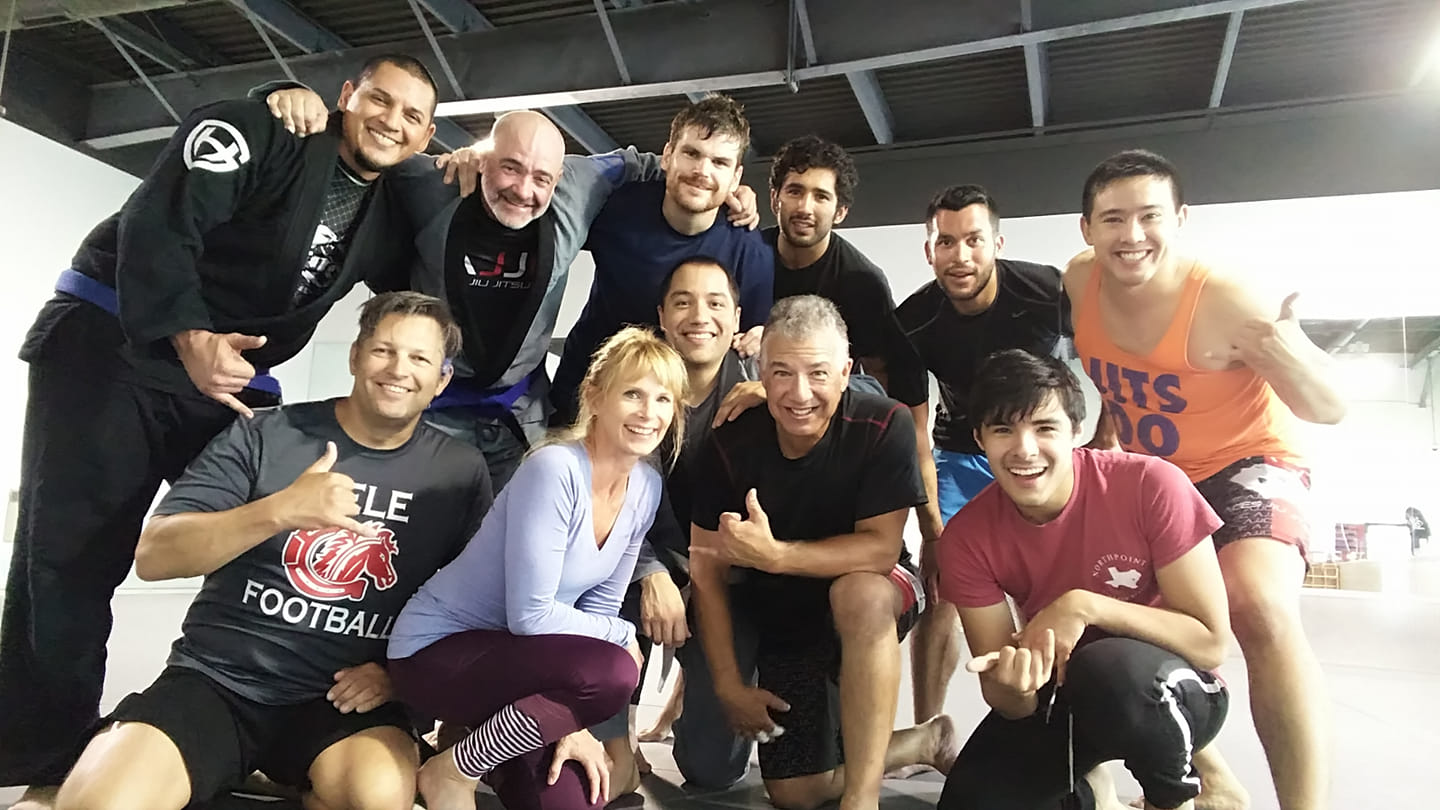There are a few different kinds of atmospheres that are available in the Brazilian Jiu Jitsu world. Each comes with its own benefits and drawbacks.
Here are the main ones that I’ve seen:
- Sportive BJJ academy: The sportive BJJ academy is one of the most popular kinds of training atmospheres. In this environment your focus won’t be on the self defense aspects of jiu jitsu (though they can be touched upon). Rather, the focus is entirely on building competitors from top to bottom. Most major academies that we hear about are sportive academies. Atos, Alliance etc. The people who train here, even the hobbyists, are learning a very specific style of grappling that keeps points, advantages and competition rules in mind. The major drawback to this kind of environment is that the hobbyist may not feel as welcome and that if your entire purpose of learning jiu jitsu is to become more proficient at self defense you may not feel like you’re getting your money’s worth. The one thing to bear in mind is that many sportive BJJ academies don’t compete. They just practice a certain kind of jiu jitsu
- Self Defense/Gracie Jiu Jitsu Academy: this is the opposite of the sportive academy. In this environment you’ll spend a lot of time focusing on self defense. You will learn how to deal with different sorts of attacks that might happen in self defense situations, but your understanding of sportive techniques won’t be as strong. In these atmospheres techniques that require both hands be focused on one limb may not be as popular because of the likelihood that you’d get hit in the face if applying the technique in a street fight. These sorts of environments tend to be friendlier to beginners and hobbyists because of the heavier emphasis on fundamentals, but if you train at one of these academies you are statistically less likely to do well in competition (this isn’t to say that there aren’t any successful competitors that practice at this sort of academy, there are just statistically fewer of them.)
- MMA Gym: MMA gyms are super interesting in the jiu jitsu world. Most MMA gyms have a jiu jitsu instructor, often a high level grappler to help the fighters mix it up. You’ll find that in this sort of environment the jiu jitsu program is sort of an afterthought, many MMA fighters are underranked in jiu jitsu because their focus is entirely on nogi for MMA. Another interesting phenomenon that you’ll find is that MMA fighters tend to have considerably less ego when engaging in pure grappling because their focus is so heavily on MMA that pure grappling is seen as a different sport. Their grappling will be stiffer and more hard nosed, often combining aspects of wrestling, catch and Judo if they’ve cross trained. The key benefits of training BJJ at an MMA gym is that the culture will be far more relaxed because of the deemphasis on the BJJ program. The major drawback will be the same thing, overrelaxation on the BJJ side of things.
- Born-again Karate School: Here’s a super interesting phenomenon: A Karate (or other TMA) black belt discovers BJJ and realizes the uselessness of their skills, this individual has a healthy mindset and starts training jiu jitsu. Often These academies tend to gravitate toward the Self Defense/Gracie Jiu Jitsu style because the style/structure fits into the existing framework nicely. These sorts of academies tend to be more focused on areas of jiu jitsu that intersect with TMA, often trying to improve their TMA skills with jiu jitsu. I’ve also noticed that they have the largest kids’ programs.
These are just 4 kinds of academies that I’ve seen in abundance. Each has significant strengths and weaknesses and all should be respected for what they contribute. If you train at one kind of academy and don’t at least take the time to drop into the other kinds you might be missing out as each has something unique to offer.
Are there other kinds of jiu jitsu academies out there? If yes, what are they and what are their major identifying factors and benefits and drawbacks? If you train at one or more of these archetypes, do you find my characterization accurate? What would you add or take away from my descriptions?

Emil Fischer is a Jiu-jitsu Black Belt and BJJ competitor training under Pablo Angel Castro III at Strong Style MMA in Cleveland Ohio. An avid writer and competitor, Emil has amassed an extensive competition record. Most notably, Emil is a 2 time gold medalist at the IBJJF No Gi Pans, and has a submission victory record of 5-1 at Fight To Win Pro which includes purple belt no-gi light heavyweight championship
Emil’s sponsors are Impact Mouthguards, Cleveland Cryo, The Terphouse, Meerkatsu, Eddys on Coventry and Nottarookie. He is a Ludwig Van and Vanguard Kimono brand ambassador.
